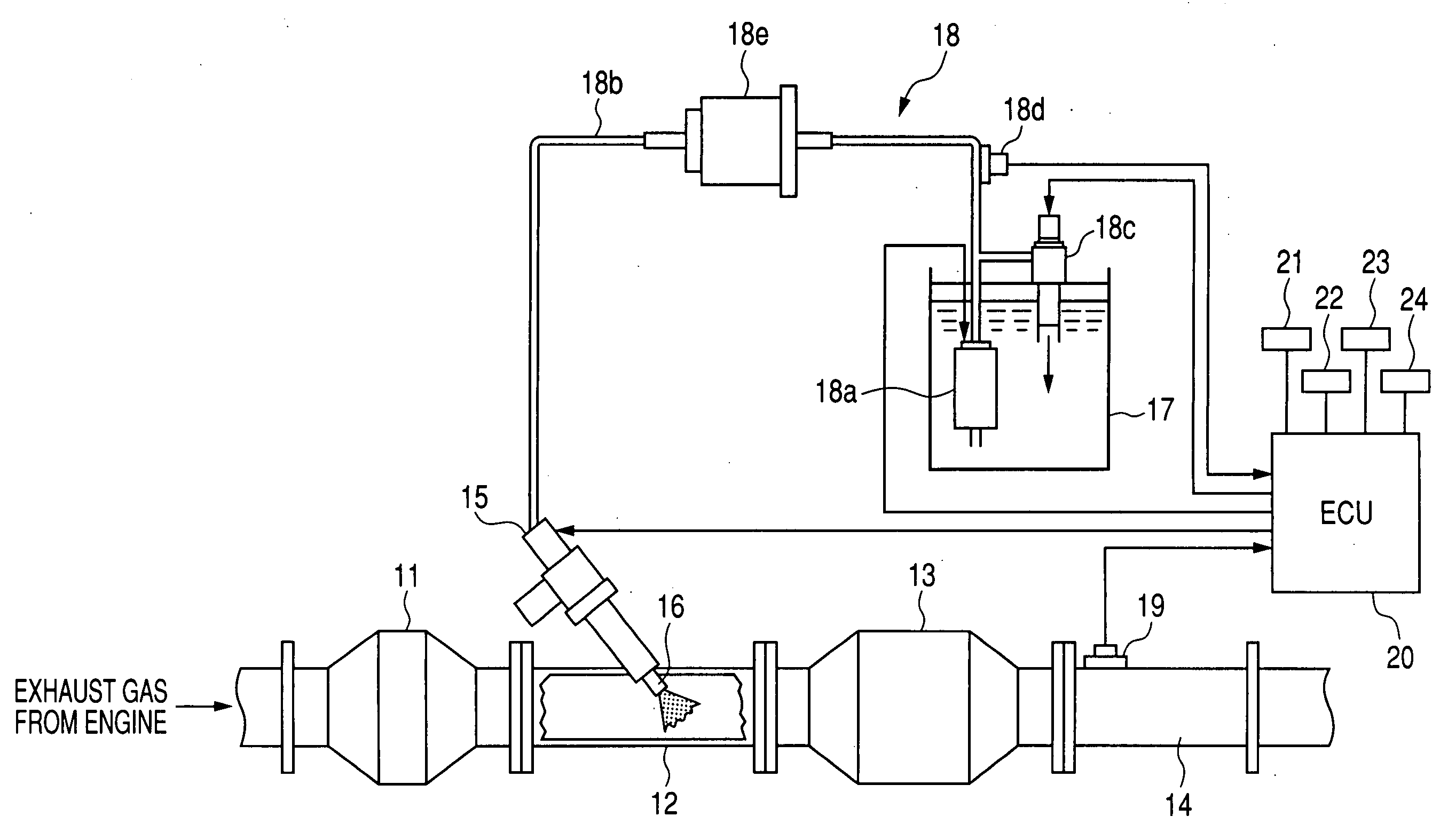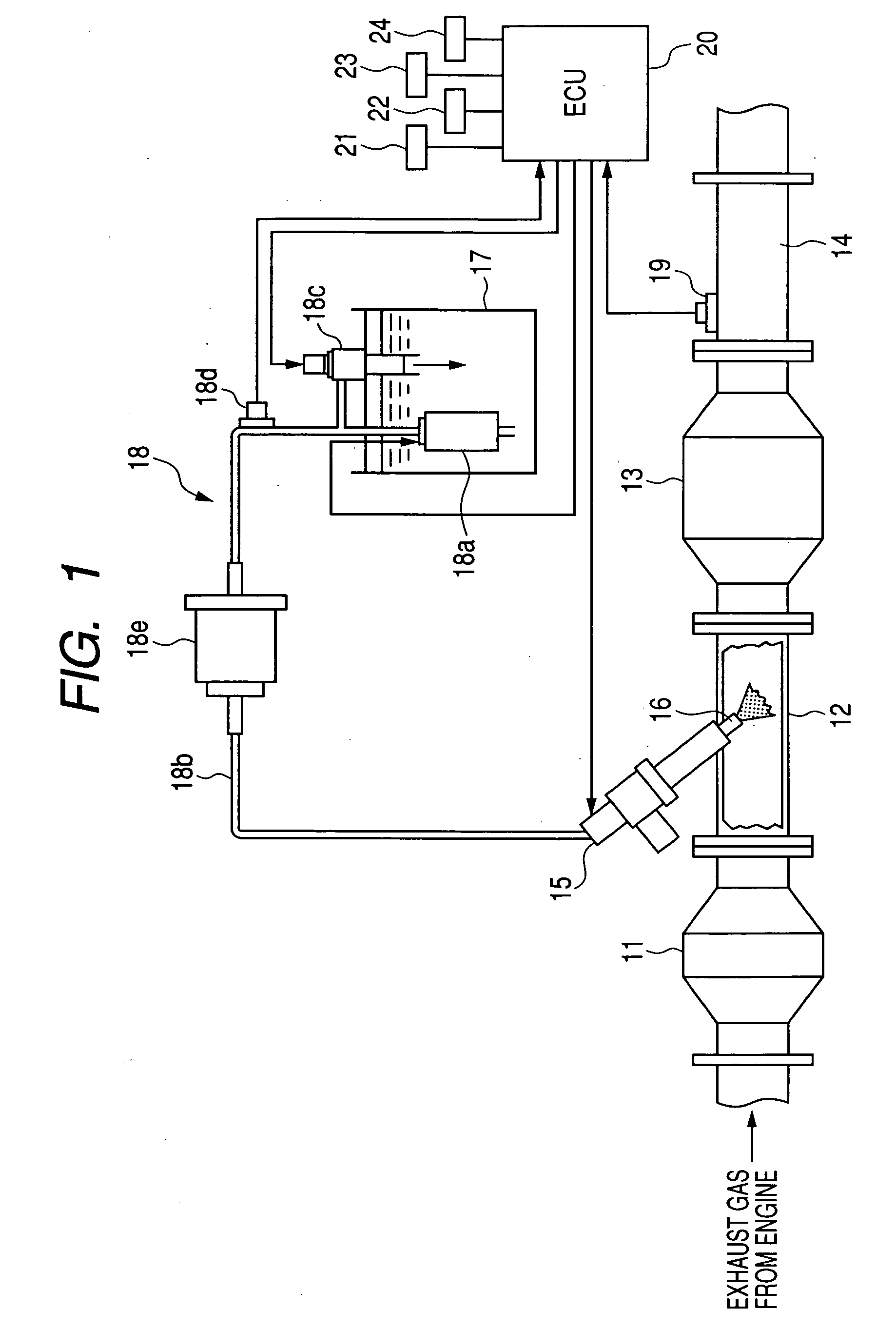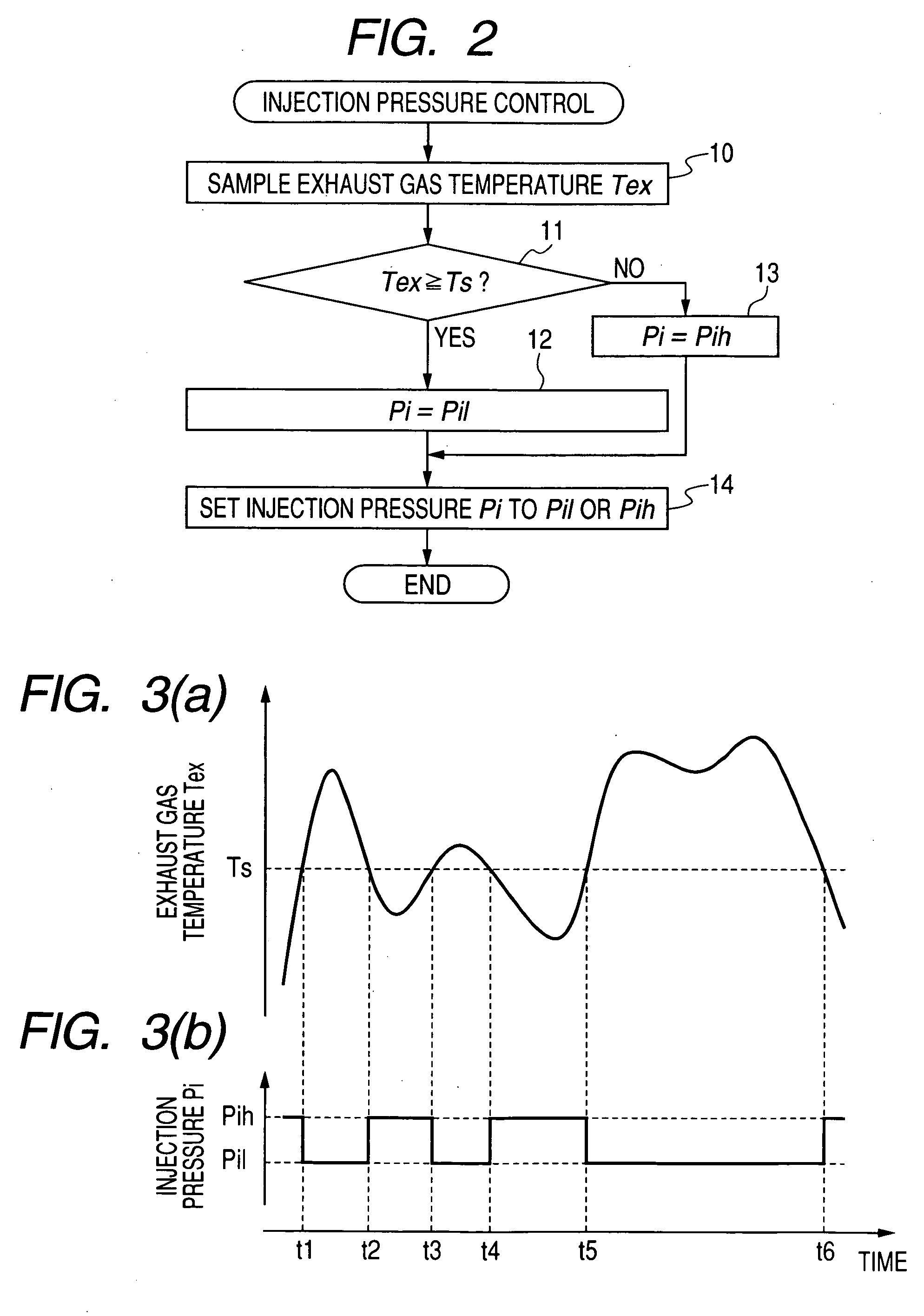Reducing agent spray control system ensuring operation efficiency
a technology of spray control system and reducing agent, which is applied in the direction of fluid pressure control, separation process, instruments, etc., can solve the problems of increasing physical load and reducing service life, and achieve the effects of increasing the pressure accelerating the reaction of the selected component, and enhancing the atomization of the reducing agen
- Summary
- Abstract
- Description
- Claims
- Application Information
AI Technical Summary
Benefits of technology
Problems solved by technology
Method used
Image
Examples
second embodiment
[0051]The urea SCR device of the second embodiment will be described below.
[0052]The ECU 20 of the urea SCR device of this embodiment is designed to control the injection pressure Pi of the urea aqueous solution as a function of the flow velocity (i.e., the flow rate) of the exhaust gas within the exhaust pipe of the diesel engine. This control task will be described below in detail with reference to a flowchart of FIG. 4. The same step numbers, as employed in FIG. 2, will refer to the same operations, and explanation thereof in detail will be omitted here.
[0053]After entering the program, the routine proceeds to step 20 wherein the flow velocity FVex of the exhaust gas emitted from the diesel engine is determined. The flow velocity FVex may be calculated using an output from the airflow meter 21.
[0054]The routine proceeds to step 21 wherein it is determined whether the flow velocity FVex is higher than or equal to a given threshold value FVs or not. If a YES answer is obtained mean...
third embodiment
[0059]The urea SCR device of the third embodiment will be described below.
[0060]The ECU 20 of the urea SCR device of this embodiment is designed to control the injection pressure Pi of the urea aqueous solution as a function of the quantity of NOx contained in the exhaust gas after cleaned by the SCR catalyst 13. This control task will be described below in detail with reference to a flowchart of FIG. 5.
[0061]After entering the program, the routine proceeds to step 30 wherein the quantity QTa of NOx contained in the exhaust gas flowing downstream of the SCR catalyst 13 is determined.
[0062]The routine proceeds to step 31 wherein it is determined whether the quantity QTa of NOx, as derived in step 30, is smaller than or equal to a threshold value QTs1 or not. If a YES answer is obtained meaning that the quantity QTa of NOx is smaller than or equal to the threshold value QTs1, then the routine proceeds to step 12 wherein the ECU 20 sets the injection pressure Pi of the urea aqueous sol...
fourth embodiment
[0066]The urea SCR device of the fourth embodiment will be described below.
[0067]The ECU 20 of the urea SCR device of this embodiment is designed to control the injection pressure Pi of the urea aqueous solution as a function of the quantity of NOx contained in the exhaust gas before cleaned by the SCR catalyst 13. This control task will be described below in detail with reference to a flowchart of FIG. 6.
[0068]After entering the program, the routine proceeds to step 40 wherein the quantity QTb of NOx contained in the exhaust gas flowing upstream of the SCR catalyst 13 is determined.
[0069]The routine proceeds to step 41 wherein it is determined whether the quantity QTb of NOx, as derived in step 40, is smaller than or equal to a threshold value QTs2 or not. If a YES answer is obtained meaning that the quantity QTb of NOx is smaller than or equal to the threshold value QTs2, then the routine proceeds to step 12 wherein the ECU 20 sets the injection pressure Pi of the urea aqueous sol...
PUM
 Login to View More
Login to View More Abstract
Description
Claims
Application Information
 Login to View More
Login to View More - R&D
- Intellectual Property
- Life Sciences
- Materials
- Tech Scout
- Unparalleled Data Quality
- Higher Quality Content
- 60% Fewer Hallucinations
Browse by: Latest US Patents, China's latest patents, Technical Efficacy Thesaurus, Application Domain, Technology Topic, Popular Technical Reports.
© 2025 PatSnap. All rights reserved.Legal|Privacy policy|Modern Slavery Act Transparency Statement|Sitemap|About US| Contact US: help@patsnap.com



